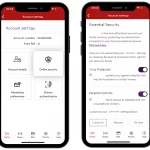PAC Warns UK Gov Failures Mean Rural Gigabit Broadband Delays

A new report from the Public Accounts Committee (PAC) has identified a “litany” of failures in the Government’s (DCMS) £5bn Gigabit Broadband Programme (F20), which it warns will result in “business and homes in rural areas” being “locked out of gigabit broadband for years to come.”
The report itself largely re-states much of what we already know. As most people will recall, the Government’s programme has been through quite a few changes since 2019 (prior to that the goal was FTTP for all by 2033). Previously, the plan was to cover the whole of the UK with Fibre-to-the-Premises (FTTP) infrastructure by the end of 2025, which was unworkable and so they watered that down to “gigabit capable” (i.e. allowing the use of more technologies, such as Virgin Media’s existing network).
However, achieving the revised “gigabit capable” coverage by 2025 was still an incredibly tall order and so, at the tail end of 2020, the Government watered it down yet again to ensure that such networks could reach a “minimum” of 85% UK coverage by the end of 2025, before getting “as close to 100% as possible” thereafter. But initially they’ve only been able to release £1.2bn of the promised funding for the next 4 years.
Advertisement
At the same time, it’s important to remember that the gigabit programme itself is focused upon tackling the final 20% of hardest to reach premises (c.5-6 million) – using an outside-in build strategy (i.e. starting in rural areas). The draft strategy for all this was only published last month, but it could be another year before the first builds begin and the Department for Digital, Culture, Media and Sport (DCMS) has already warned that those in the final 1% of premises may be too expensive to serve.
The PAC’s Report
Suffice to say that the ever-shifting goal posts, as well as an on-going lack of clarity over delivery time-scales (it’s difficult for them to offer this before contracts have even been awarded), are all aspects that the PAC has picked up on its report.
Brief Summary of the Key Issues
— failure to make meaningful progress to tackle the barriers faced by operators in maximising gigabit connectivity by 2025.
— failure to demonstrate it has learnt lessons from the superfast programme for the detailed design of the gigabit programme.
— failure to demonstrate how its centralised procurement model will retain the people, skills and knowledge in local authorities that were critical to success in the superfast programme.
— failure to give any reassurance that local authorities will get additional funding to retain their expert resources at a time when local government finances are under severe pressure from the pandemic.
— failure to make any meaningful progress in delivering the policy and legislative changes deemed essential by industry to achieve rapid roll-out.
— failure “yet again” to prioritise consumers in rural areas.
The Committee concluded by saying they’re very concerned the reduced target will still be “challenging” and that the hardest to reach premises will be struggling with slow broadband for many years to come. This was always going to be true because it takes an inherently long time to deploy new networks in rural areas – it doesn’t happen at the click of a finger.
The PAC added that they are also “concerned that those in rural areas may have to pay more,” and is not convinced that “if and when rural users finally do get gigabit broadband, they will enjoy the same choice of service provider and the same protections as their urban counterparts“. Obviously, more expensive deployments of faster networks in normally unviable (economically) areas can attract a higher price, although so far most of the rural FTTP builds we’ve seen have priced themselves in quite an affordable way to help attract take-up.
Advertisement
The issue of ISP choice is more complicated. Part of the goal has been to attract alternative networks to help support the build and lessen the reliance on Openreach (BT), although such networks don’t offer the same choice of service providers (at least.. not yet, but there are some talks to see if a common wholesale platform could be established). On the other hand, people covered by an altnet can still choose to go back to the old and slower network if they prefer, so choice will still exist. Better that then no gigabit choice at all.
Meg Hillier MP, Chair of the Public Accounts Committee, said:
“With the grim announcement that the country and economy will be locked down for months, the Government’s promises on digital connectivity are more important than ever. But due to a litany of planning and implementation failures at DCMS, those promises are slipping farther and farther out of reach – even worse news for the “rural excluded” who face years trying to recover with substandard internet connectivity.
For the foreseeable future, ever more of our lives is moving online, whether we like it or not. Government cannot allow digital inequality to continue to compound and exacerbate the economic inequality that has been so harshly exposed in the covid-19 pandemic. It needs to be clear about timelines in each area so that businesses and individuals can plan for their digital future.”
In fairness, 2020 hasn’t exactly been the smoothest of years for establishing a major new digital infrastructure delivery programme, what with multiple disruptive COVID-19 lockdowns (particularly the one in March 2020 when the country was unprepared) and the challenge of trying to pull Boris Johnson‘s (Prime Minister) original, and quite unachievable, rollout goals back toward a semblance of reality.
Equally we suspect that the Building Digital UK team within DCMS will be frustrated by the PAC’s report, not least over claims that they failed to learn lessons from the superfast programme, when in fact the gigabit programme does largely appear – from our perspective – to have been constructed with the weaknesses of the prior superfast programme firmly in mind.
On the other hand, until the new approach is properly put to the test then we won’t know for sure whether or not the direction they’ve taken is ultimately going to be better or worse. The procurement model, with its many different regional cluster sizes (expect lots of big and small contract awards), is complex. A great deal of admin will be required to correctly run and monitor its effectiveness.
Advertisement
The report does also briefly touch on the lack of progress with respect to extending the existing business rates holiday on new fibre lines in England, which is due to run out next year, although it noted that the Government “declined to offer any view or reassurance that the matters are being urgently pursued.”
However, the Government said they don’t agree with the report, which they claim contains a “number of inaccuracies,” albeit without elaborating too much.
A Spokesperson for DCMS said:
“Gigabit capable broadband is being rolled out rapidly – from one in 10 households in 2019 to one in three households today. We expect that half of all households will have access to gigabit speeds by the end of this year, and the UK is deploying at a faster build rate than comparable countries.
This is evidence of the progress we have made to support the private sector and reduce barriers to roll out. We will take further rapid steps this year alongside the investment being made as part of our record £5bn UK Gigabit Programme, which will focus on ensuring the hardest to reach 20% of the country is not left behind.”
As usual the PAC’s report concludes with a series of recommendations, which we’ve pasted below.
Six PAC Recommendations
1. The Department should set out, on receiving business case approval or within 3 months, a clear timeline of what activities it intends to complete and by when to achieve its revised targets including the final dates by which key milestones must be reached in order to meet those targets. It should publish yearly updates on progress thereafter.
2. The Department should identify which risks and barriers have the greatest potential to add delay and cost to the programme and provide a clear plan for how and when they will be addressed and the impact on time and schedule if they are not addressed.
3. The Department should set out in its Treasury Minute response to this report, what steps it is taking to support the retention of knowledge, skills and delivery expertise in local authorities so that the change in approach does not cause delays to the future programme.
4. As the Department finalises its approach to its gigabit programme it should set out how it is incorporating the lessons learned from the superfast programme including:
• Setting out clear programme specific objectives for the subsidised part of the future gigabit programme (the £5bn programme)
• How it intends to improve its targeting to ensure it covers only those areas in greatest need, particularly areas with a high proportion of premises which are uncommercial for rollout, and that any money that does need to be returned is done so as soon as possible
5. The Department should set out how it will establish which properties do not yet have superfast broadband, how reliable the data it will use to identify them is, and when they can expect to receive gigabit capable broadband.
6. In its Treasury Minute response to this report, the Department should set out how it plans to work with Ofcom, suppliers and industry bodies to ensure that all consumers will have a choice of service providers and are protected from overcharging, in particular where they become tied to a monopoly supplier.
UPDATE 9:22am
We’ve had a comment from UK ISP Zen Internet and fibre optic builder Cityfibre.
Paul Stobart, CEO of Zen Internet, said:
“There’s clearly a lot of work to be done if the Government is going to reach its already scaled back targets. The increasing importance of connectivity can’t be underestimated. It is vital to unlocking productivity and performance across the country and is the basis for the new post-Covid era of flexible working.”
The industry is committed to making full fibre a success. But in order to ensure targets are met and that those without sufficient connectivity, particularly in rural areas, have the speed and reliability they need, we need even greater collaboration between Government and the broadband industry, to include the infrastructure players, the carriers and the service providers. Each of these has a role to play in making this once in a generation infrastructure programme a success.”
Greg Mesch, CEO of CityFibre, said:
“Now more than ever, it is in everyone’s interest to ensure Britain’s consumers and businesses get connected to gigabit speed, ultra-reliable Full Fibre as quickly as possible, regardless of where they live or work.
The PAC is right that the revised 2025 target is both challenging and vital to meet but we believe that by working closely with Government and Ofcom it’s achievable.
At CityFibre, our Full Fibre rollout is on track to reach up to 8m premises, approximately 30% of the UK. In doing so, we are creating up to 10,000 new jobs and helping to establish the competitive infrastructure market so critical to achieving national coverage as quickly as possible.”
UPDATE 10:58am
Openreach has given their response.
Catherine Colloms, MD for Corporate Affairs at Openreach, said:
“Nationwide coverage by 2025 was always going to be an ambitious target, but it’s right to be ambitious given how critical broadband is to the UK, especially during and post the pandemic.
At Openreach, we’ve consistently championed the need for faster action on rural broadband upgrades, because we don’t want communities left behind and we know it will underpin the UK’s economic, social and environmental recovery.
We’re already building to more than 40,000 homes every week through our commercial investment programme, and we welcome the launch of the Government’s £5 billion subsidy scheme for rural areas.
We’re very keen to lean in and do our bit but, as the PAC report notes, there remain barriers preventing the industry from going faster – like business rates and access to property and land – so it’s vital that these are addressed by Government as a priority.”
UPDATE 3pm
Some more comments.
Lloyd Felton, CEO of County Broadband, said:
“Lockdown 3 is once again exposing critical problems with our outdated digital infrastructure with businesses struggling to work from home and children unable to access online learning. Broadband has long been our essential fourth utility and reliable connectivity could be viewed as a human right in 2021.
The path to full-fibre has its challenges and to succeed it requires a Herculean effort with local providers and the government working closely together to consign copper-based networks to the history bin. Whilst we were disappointed the flagship gigabit target was downgraded to 85% of UK homes by 2025, we must focus on achieving and exceeding this new goal.
Bullet-proof connectivity will be the foundation of the Covid-19 economic recovery as the nation works to ‘build back better’. We’ve seen in the past how rural areas have been left behind, from Superfast speeds to the rollout of 4G and 5G. We cannot afford to make the same mistakes again.
We’ve worked tirelessly throughout the pandemic to build and connect homes and businesses to our new Hyperfast full-fibre networks, backed by millions of pounds of private investment from Aviva Investors.
The pathway out of the Covid-19 crisis is thankfully becoming clearer with each passing day. We must therefore apply the same grit and determination to ensure no-one gets left behind. So, our message to residents and businesses blighted by poor broadband in rural areas of East Anglia – stay tuned as next-generation broadband is on its way to uplift your lives during the pandemic and beyond.”
Malcolm Corbett, INCA’s CEO, said:
“The altnets have proved themselves over the past few years as a highly capable network of organisations tackling both large-scale city projects and sparsely populated rural areas. Government and Ofcom increasingly understand the value of the independent sector, and with more effective support the altnets can move even faster to help meet the scale of the challenge.
We share the PAC’s concerns about rural areas being left behind, and that’s why we are working closely with BDUK and Ofcom to ensure that the Government’s revised “Outside In” strategy has the best chance of success.”
Mark is a professional technology writer, IT consultant and computer engineer from Dorset (England), he also founded ISPreview in 1999 and enjoys analysing the latest telecoms and broadband developments. Find me on X (Twitter), Mastodon, Facebook, BlueSky, Threads.net and Linkedin.
« O2 UK Offers 40GB of Free Mobile Data to Disadvantaged Pupils
Hyperoptic Deploy 1Gb Fibre to Social Housing in Southampton »























































I think that this is an impossible situation for one basic reason not to do with funding even if the government had a bottomless pit of money you still have a problem with trained personnel if you are new isp starting up and need to build a new network you require civics skilled personnel to lay duct build jointing chambers etc then you require cable layers/pullers to fill your new duct the you need fibre jointers commissioning engineers the list go on even if you have these skills in house I doubt very much if this is sufficiently large enough to do a national rollout and if you already existing isp then you have the added responsibility for your existing network which will probably be a Victorian based technology thereby high maintenance and high cost hence the attraction of fibre. Even if you deploy the tactic commonly employed that is to use contract suppliers I feel that there will always be an accute shortage of skilled personnel.I think some of the local community based programs could be a beacon for going forward.
I wonder how long it takes to train a person to be able lay down fibre, and ducting etc. Surely it would only take 1 or 2 years if its a specifically focused programme?
I know OR and CF are both trying to mass recruit these people, OR having opened their own training schools. But why don’t they also make their courses available at colleges?
“if and when rural users finally do get gigabit broadband, they will enjoy the same choice of service provider and the same protections as their urban counterparts“
Seriously they think this was ever a possibility. Give me strength.
Yea a flawed plan like it’s idea for mass vaccinations, but snubbing all those offering to help with that whilst the NHS claiming on there own they can’t do it.. and then doing a U turn once the media reports on it. But, as I keep saying, being in North Dorset I shall await the arrival of 5G to get faster then 70mbps FTTC. Dorset council has been pretty good with its efforts I think, but as we know if your on an Open Reach FTTC line and in rural England their seems to be little hope of any gigabit landline broadband solutions being offered. Unless you buy a new house of course. Or Virgin Media or another telnet decides to put its infrastructure in your area.
but as we know if your on an Open Reach FTTC line and in rural England their seems to be little hope of any gigabit landline broadband solutions being offered. Unless you buy a new house of course. Or Virgin Media or another telnet decides to put its infrastructure in your area.
is that your own opinion or is there any facts to back that up – I think that is incorrect – there is significant rural Build going on in openreach (which has been well documented by ISP review
@fastman Firstly perhaps you could use “ when quoting someone as it reads as though you typed it.
And secondly I openly invite you to post links to these stories.
Pezza, I agree with Fastman.
A number of postcodes in my local area (SE Kent) that are sub-superfast are either being or are planned to be upgraded to full fibre and they are not part of any CFP or Fibre First program from what I can see (small villages etc).
A couple of postcodes containing about 90ish properties (all under 18Mbps) which I added as part of a CFP have been removed from the application as they’re actually in the natural build plan (this wasn’t the case when I was adding them).
Unfortunately I’m still on around 20Mbps/1Mbps and not in any build plan, so we’re pursuing a CFP for our area instead.
So it’s clear to me that Openreach are rolling out the new infrastructure to rural areas with sub-superfast speeds (albeit not as quickly as we’d like!). If you already have access to 70Mbps speeds then I’d imagine you would not be seen as a high priority for now.
@JamesP you clearly did not read my comment, I made no mention at all about those on none FTTC lines, my comment was purely based around those who are on FTTC and in rural areas, as I said above please post links to stories to show otherwise. Looking at your comment you are referring to those on ADSL right?
@Pezza, I didn’t say these were not on FTTC lines, from my knowledge they have FTTC available just with Sub-Superfast speeds (certainly the case in my village where these properties are now in the build plan – just very long lines!).
The article quotes this:
“5. The Department should set out how it will establish which properties do not yet have superfast broadband, how reliable the data it will use to identify them is, and when they can expect to receive gigabit capable broadband.”
This should have happened more than a decade ago! What’s going on in this backwards country? By now it should be obvious to everyone (except for a few hardcore BT fans) that the current fibre broadband strategy has been farce, with only about one 5th of the country having access to fibre broadband at the end of 2020.
The cherry-picking approach by commercial companies has contributed to a digital divide in this nation. For many areas commercial telecom companies are not able to do long-term fibre deployments, simply because the ROI threshold is too far away in the future.
It’s probably one of the “inaccuracies” that the Government alluded to, since this is going on all the time and they’re called Open Market Reviews. You’ll have heard of this, since we’re often mentioning them for different areas.
The trouble is that OpenReach provide local councils with surprisingly inaccurate estimates of what speeds are currently achievable for various premises. Which is surprising as it ought to be trivial for them to automatically gather DSL sync speeds for their lines. e.g. there’s a cottage near me where the ‘current speed’ is shown as 15-23MB which is a) a massive range (How old is your child? Oh, 15 to 23). And b) there’s no way that they get 15MB.
The Committe is quite right that the OMRs, even after several phases, are still using unreliable data. Openreach’s records are quite patchy in rural areas in my experience.
I had one friend left out of a BDUK upgrade because Openreach said he was connected to a DP 9.4Kms away, when it was actually outside his house.
My house was supposedly 1.3km from the cabinet and capable of 15-20Mbps but the run was actually 2.2Km when an engineer investigated it to find out why we were only getting 4-6Mbps.
Then we and the neighbours were upgraded to FTTP, but a small hamlet a further mile away was left out of the upgrade because they were supposedly capable of superfast speeds, when the maximum anyone gets there is 1mb (and the dsl checker agrees with that).
Another house towards the end of our FTTP run cant get either FTTP or even a phone line because it has been empty for a number of years and is no longer on Openreach’s list of premises, despite there being a DP adjacent to their garden,with cable running towards their house.
etc etc
gerada more disinformation which is either deliberate or you dont understand
your comment “another house towards the end of our FTTP run cant get either FTTP or even a phone line because it has been empty for a number of years and is no longer on Openreach’s list of premises, despite there being a DP adjacent to their garden,with cable running towards their house.
Question 1 have they tried to order a telephone line to that premise (as that would then the record being updated (they record will then advise what they can then do Premise A will always got to DP A it it outside (service or net) – once they had a telephone line they should be able to see what the checker then says assuming a CBT is actually on that DP
if they cant order a line (that breaks the USO) as Openreach has to provide a telephone line (upto a cost of £3400 i think)
Gnewton, the government isn’t even aware that the “superfast broadband” actually isn’t superfast at all anymore……so we live in hope!
@DL Openreach only provide the physical connections so do not have visibility of the equipment sync speeds.
@fastman
You seem to inhabit a fantasy world in the which Openreach and BT are paragons of managerial competence.
Even trying to find someone to speak to who knows what they are talking about can be damned near impossible.
They don’t really want a landline they want FTTP, and they certainly don’t want to pay £3400 for a line that already exists.
I am not going to go into the entire saga which has been going on for 3 months. Suffice to say they were not amused to find that on Wednesday this week fibre was strung on and past the pole on their boundary to service the final property on the run.
@gadget good point, in that case OR could demand that their customers aggregate sync stats and report them back and OR could in turn report these to the LAs.
Gerada
you comment is most amusing if it was not so XXXXX
Was you scheme done as a community or BDUk or something else (all of these schemes terminate at the CBT and always have done) if these cannot order it is because they are either out of distance (beyond the distance of the CBT) not registered on Openreach address list , dont have a NAD key, and might be classified as a silver adresss (new or not had service for a considerable period), all of the above could create a situation where a premises might not be able to place order or be shown on the openreach checker which would not allow an order to be placed with a service provider
byt hey what do i know – as you seem to clearly seem to think you know more about how Openreach operates than me
@Fastman
Compare and contrast the approach of Anglian Water who simply sent a guy out to check on site after one phone call.
gerara
what on earth has anglian water got to do with openreach (there is no corrolatio to anything and if you think there is it proves you know absolutle nothing about the complexity and the intracies and the challenges of building, delivering and servicing an wholesale open access network –
“what on earth has anglian water got to do with openreach”
This very question shows you don’t understand the importance of fibre broadband to be treated as a utility, despite the obvious fact that private commercial telecom companies are not the solution to the increasing digital divide in this already backwards country.
@fastman
Anglian Water is relevent. They were proactive in getting to the root of the matter and sorting it, not just pass the buck from department to department. I also notice you haven’t taken issue with the rest of my examples of Openreach records being wrong, the frist 2 only sorted out after weeks or months of complaints and escalation to CEO office. The 3rd still hasnt been sorted.
Mixing as the committee do the late or non completion of superfast in rural with a failure to take a pretty daft election promise seriously is pretty poor.
BT and Openreach set out a strong list of demands while not being called to account on the accounting treatment of the clawback.. capitalising what is owed for rural but not investing in it.
The civil servants may be able to use the report it to 1) push back given the 1.6m premises is wrong and half of the the actual ~1m are already contracted. 2) Show how clawback can be used to contract the final ~500k premises, and then 3) highlight the need to negotiate with BT on their demands in exchange for rural exchange inclusions and from there work out what else needs doing rather than rushing a new procurement process without knowing if the business case for overbuilding the already subsidised will work. A 2040 date can also be set.
Life goes on, a government that over promises and then under delivers!!
Areas like the new forest have been already left behind. Partly because of funding, and other factors.
My area of the new forest is to be one of the few areas with fttp. We are now into 3 years of waiting with 2 years of delays. We are now due to be completed with fttp at the end of this year.
So its not only being left out but also delays to completion are the issues.
new forest – one of the hardest and most complicated and expensive places do any anything with infrastructure especially if you need land to site it on and you have do deal with Verderers
this year, next years, sometime never
It is touching to see Cityfibre’s concern.
I’m still stuck on a rural non FTTC line, the ducting and poles were put 2 miles into the village nearly 3 years ago and then openreach decided they couldn’t be botheredto connect it at the end of the superfast cymru scheme and left it coiled on a pole covered in weeds . To pop some cable down it under the USO they told my neighbour would be all the subsidy under the sun then up to 7k from each of us. I’m 100m probably from the end of it.. Fibre optic cable isn’t that expensive! They had a surveyor here the other day, all they’d say was “could be years.” At the moment my home broadband is 1.5mbps, 4g antenna in the winter gets 10-12, trees in the summer drop it. Elon Musk to me is a game changer, might force some competition and a bit of honesty from the big players if they truly want our business.